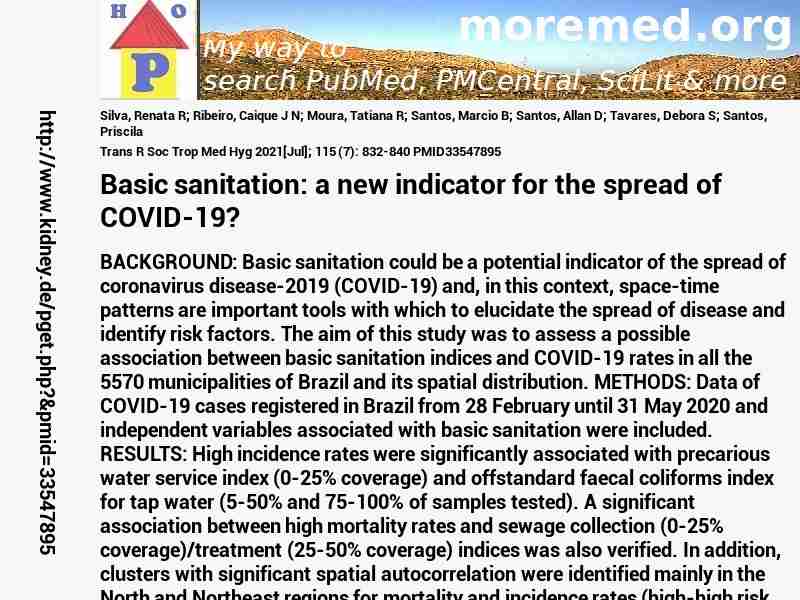
|
10.1093/trstmh/traa187
http://scihub22266oqcxt.onion/10.1093/trstmh/traa187

33547895!7928698!33547895
 free free
 free free
 free free
Warning: file_get_contents(https://eutils.ncbi.nlm.nih.gov/entrez/eutils/elink.fcgi?dbfrom=pubmed&id=33547895&cmd=llinks): Failed to open stream: HTTP request failed! HTTP/1.1 429 Too Many Requests
in C:\Inetpub\vhosts\kidney.de\httpdocs\pget.php on line 215
|  
Deprecated: Implicit conversion from float 227.6 to int loses precision in C:\Inetpub\vhosts\kidney.de\httpdocs\pget.php on line 534
Warning: imagejpeg(C:\Inetpub\vhosts\kidney.de\httpdocs\phplern\33547895.jpg): Failed to open stream: No such file or directory in C:\Inetpub\vhosts\kidney.de\httpdocs\pget.php on line 117
 Trans+R+Soc+Trop+Med+Hyg 2021 ; 115 (7): 832-840 Trans+R+Soc+Trop+Med+Hyg 2021 ; 115 (7): 832-840
Nephropedia Template TP
gab.com Text
Twit Text FOAVip
Twit Text #
English Wikipedia
|
Basic sanitation: a new indicator for the spread of COVID-19? #MMPMID33547895Silva RR; Ribeiro CJN; Moura TR; Santos MB; Santos AD; Tavares DS; Santos PLTrans R Soc Trop Med Hyg 2021[Jul]; 115 (7): 832-840 PMID33547895show ga
BACKGROUND: Basic sanitation could be a potential indicator of the spread of coronavirus disease-2019 (COVID-19) and, in this context, space-time patterns are important tools with which to elucidate the spread of disease and identify risk factors. The aim of this study was to assess a possible association between basic sanitation indices and COVID-19 rates in all the 5570 municipalities of Brazil and its spatial distribution. METHODS: Data of COVID-19 cases registered in Brazil from 28 February until 31 May 2020 and independent variables associated with basic sanitation were included. RESULTS: High incidence rates were significantly associated with precarious water service index (0-25% coverage) and offstandard faecal coliforms index for tap water (5-50% and 75-100% of samples tested). A significant association between high mortality rates and sewage collection (0-25% coverage)/treatment (25-50% coverage) indices was also verified. In addition, clusters with significant spatial autocorrelation were identified mainly in the North and Northeast regions for mortality and incidence rates (high-high risk areas) and for offstandard faecal coliforms index. Those regions are considered the poorest in Brazil, presenting with low incomes, human agglomerations, as well as a poor basic sanitation system, which also hinder the implementation of COVID-19-preventative measures. CONCLUSIONS: A precarious basic sanitation infrastructure could potentially be associated with the high transmission of severe acute respiratory syndrome coronavirus-2 in Brazil.|*COVID-19[MESH]|*Sanitation[MESH]|Brazil/epidemiology[MESH]|Cities/epidemiology[MESH]|Humans[MESH]
  
DeepDyve
Pubget Overpricing | 
|